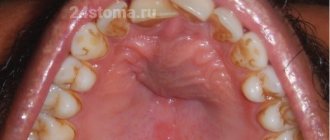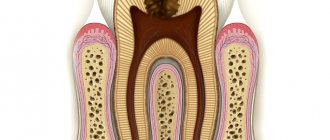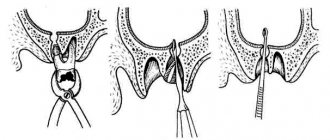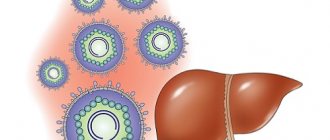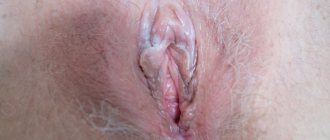Granuloma annulare
Granuloma annulare is a benign dermatological disease of an often relapsing nature, in which dense rashes slightly raised above the skin, resembling a ring in shape, appear.
The nodules are usually pink in color, but can be flesh-colored or bluish in color. There are single and multiple. Granuloma annulare of the skin is a fairly rare disease, diagnosed in 0.3% of patients who consult a dermatologist. Most often these are school-age children and young people, less often adults. In men, the disease occurs almost 2 times less often than in women.
Causes of granuloma
The reasons for the occurrence of this type of formation can be different, the main ones are:
- damage to the body by infectious diseases (syphilis, typhoid fever, typhus, tuberculosis);
- collagen diseases (rheumatism, scleroderma);
- drug effects;
- diseases caused by dust (silicosis, talcosis, asbestosis);
- dental diseases.
The mechanism of granuloma formation can be divided into 4 stages:
- A collection of young cells prone to phagocytosis (a process by which cells take up and digest particulate matter).
- Active proliferation of formed phagocytes.
- Transformation of phagocytes into epithelial cells.
- A collection of epithelial tissue that forms a granuloma.
Causes of granuloma annulare
The etiology of the disease has not been precisely established, but it is assumed that pathologies of the immune system underlie its development.
Granuloma is not associated with systemic disorders, except in cases of multiple rashes in adults, in whom a disorder of glucose metabolism is often detected.
It is believed that the manifestation of the disease may be a reaction to the following risk factors:
- introduction of tuberculosis vaccine (BCG);
- performing a Mantoux test;
- insect bites;
- exposure to ultraviolet rays;
- overdose of vitamin D;
- skin injuries;
- viral infections;
- tick-borne borreliosis;
- diabetes;
- autoimmune thyroiditis;
- tuberculosis.
What is dental granuloma, the reasons for the formation
Dental granuloma is a pathological neoplasm of periodontal tissues affected by inflammation, appearing in the upper part of the tooth root. Externally, the granuloma looks like a dense small nodule (up to 0.5 cm in diameter). If you do not urgently treat a dental granuloma, it will continue to develop and deform into a radicular cyst - a capsule that is filled not only with dead tissue cells, but also with pus and bacteria.
Some people believe that a cyst and a dental granuloma are the same thing. But these are different diseases. The tooth cyst is larger in size and does not show any symptoms longer. As granuloma develops, the tooth will become very painful.
What causes dental granuloma? There are a number of reasons that contribute to the occurrence of pathological formation at the apex of the tooth root:
1. Granuloma under the tooth can occur as a complication of caries, pulpitis, periodontitis, the treatment of which was not carried out on time. It is important to understand that no dental disease goes away on its own! If you don’t treat your teeth, they will continue to decay, and the inflammatory process will spread to the internal tissues of the tooth and to its root!
2. Poor quality of dental treatment can lead to the appearance of a granuloma on the root of a tooth. If mistakes were made during the treatment of caries or other dental diseases, for example, the tooth canals were poorly cleaned and treated, then in the future there is a high risk of various complications, including the formation of granulomas on the root of the tooth.
3. Severe tooth trauma, leading to infection penetration to the root.
These are the main reasons that can provoke the growth and development of granulomas on the roots of the tooth. If you do not want to face such an unpleasant disease, never delay dental treatment, which you can undergo without pain and stress in our dental clinic in Moscow - Firadent.
It is worth learning and remembering that granuloma can appear after tooth extraction. Most often this happens when the tooth was removed incorrectly or after the operation the patient did not follow the doctor’s recommendations on hygiene. Bacteria easily enter the open socket that remains after the tooth is extracted from the gums, and as a result of their active reproduction, an inflammatory process begins and a granuloma is formed.
Types and symptoms of granuloma annulare
There are four forms of the disease, differing in clinical picture:
- Localized is the most commonly diagnosed granuloma (about 90% of all cases, especially in childhood). It is characterized by the appearance of small (up to 5 mm) dense hemispherical nodules of flesh-colored or pinkish color, smooth to the touch. They are arranged in the form of an arc or ring, touching each other. Typically appear on the extensor surfaces of the hands and upper arms, legs and feet. Sometimes the scalp and area around the eyes are affected. Gradually, the lesions increase in diameter, reaching 5 or more centimeters. In the center, the skin may be normal or have a bluish tint. There are no signs of epidermal damage.
- Subcutaneous granuloma annulare differs in that the nodules form not on the skin, but in the subcutaneous layer. Nodules can be either single or multiple. They appear on the back of the hands, upper arms (up to the elbows), scalp, legs, fingers, and less often in the area around the eyes. This granuloma annulare occurs in children only before the age of 6 years. May recur if removed.
- Disseminated granuloma is characterized by the appearance of multiple purple rashes of different shapes and sizes on different areas of the skin. The disease is almost always diagnosed in adults; it rarely affects young people. The formations can be scattered and merging, due to which the lesions acquire a multiform character, are rarely located in a ring-shaped position, and symmetry is a typical feature. Disseminated granuloma annulare is prone to a chronic relapsing course. Resistant to standard treatment.
- The perforating form occurs in only 5% of cases, mainly in children and young adults. Papules appear on the skin, which merge into large plaques. There is a “plug” in the central part of the hearth. When you press on it, the contents of a jelly-like consistency are released. Then the plaque becomes covered with a crust and acquires a relatively flat surface with a slightly depressed center. In its place, atrophic scars may subsequently form.
Granuloma treatment methods
For each type of disease, special therapy is indicated, so you cannot treat granuloma on your own. For the treatment of inflammatory nodules of infectious origin, appropriate medications are used, the action of which is aimed at the causative agent of the infectious disease. Antibiotics, immunomodulators, and vitamins can be used as medications.
Sometimes they resort to radiation therapy, cryotherapy and chemotherapy. Surgical removal of granulomas is also possible. Laser therapy is considered one of the most effective methods.
It is better to start treatment of granuloma at the earliest stages of the disease. Sometimes the course of treatment can last up to several years. It is very important to adhere to a diet; the patient’s nutrition should be complete and balanced.
Treatment of granuloma annulare
Since the nodules usually do not cause any discomfort, therapy may not be required. When planning treatment, it is recommended to take into account the tendency of the disease to spontaneously resolve within 2 years. Relapses occur in approximately 40% of cases, however, new nodules can disappear spontaneously.
If formations create an aesthetic problem or are accompanied by atypical manifestations, you should consult a dermatologist. If any skin formations are detected in a child, it should be shown to a doctor.
The doctor decides how to treat granuloma annulare, depending on the form of the disease, its location and prevalence, as well as the age of the patient.
For rapid healing of the skin, external medications can be prescribed. Effective creams and ointments for granuloma annulare contain corticosteroids: hydrocortisone, betamethasone, methylprednisolone, mometasone, clobetasol. During the first 2 weeks, the drug should be applied to the affected areas once a day. Over the next 2-3 weeks - once every two days. In rare cases, intradermal administration of corticosteroid drugs is required.
Additionally, patients are recommended to take oral vitamin E or ascorbic acid and rutin.
If external therapy with glucocorticosteroids does not produce the expected effect, topical calcineurin inhibitors are prescribed in the form of ointments (pimecrolimus or tacrolimus). They should be applied twice daily.
To treat all forms of granuloma in adults (they are not recommended for children), physiotherapeutic methods can be used: ultraviolet irradiation, phototherapy, PUVA therapy.
In cosmetology, cryodestruction is often used to remove nodules. However, most medical specialists do not advise resorting to such technology and note that this method causes progression of the disease, which is manifested by the growth of lesions along the periphery.
Surgical excision of granulomas is not performed due to the nature of the skin lesions.
If necessary, it is worth adjusting blood glucose levels, treating chronic infections and concomitant pathologies.
Diagnosis of granuloma
A large number of diseases can provoke the appearance of inflamed nodules. To determine the cause of their occurrence, the doctor examines the patient, studies complaints and medical history, then prescribes additional examinations. Their range may include :
- general blood analysis;
- blood chemistry;
- microscopic examination of smears from the genital organs (if granuloma venereum is suspected);
- biopsy of granuloma cells (examination of tissue under a microscope; allows you to determine the nature of inflammation);
- radiovisiography (computer x-ray; used to determine dental granuloma).
- Magazine archive /
- 2019 /
Ligature granuloma around a silk thread after high orchidectomy
DOI: https://dx.doi.org/10.18565/urology.2019.6.113-114
S. Caliskan, R. Akdeniz, M. Sungur, B. Eser
1) Hitit University, Çorum Research and Educational Hospital, Urology Department, Çorum, Turkey; 2) Hitit University, Çorum Research and Educational Hospital, Department of Pathology, Çorum, Turkey Hitit; 3) Hitit University, Çorum Research and Education Hospital, Nephrology Department, Çorum, Turkey Hitit
Ligature granuloma is a very rare complication of surgical interventions associated with the use of non-absorbable sutures. The development of granuloma is a chronic process, which is accompanied by the appearance of multinucleated giant cells and includes two stages: the primary tissue reaction to the passage of a needle and a specific reaction to suture materials. Ligature granuloma does not have pathognomonic signs during instrumental examination. To diagnose and relieve inflammation, surgical treatment is performed. A 59-year-old patient had a dense, painless nodular formation measuring 3x2 cm in the right half of the scrotum. Three weeks ago he underwent a high orchidectomy. Education has been removed; histological examination showed a ligature granuloma around the silk thread.
Key words: orchiectomy, granuloma, silk thread
The full text of the article is available in the Doctor's Library
Literature
1) Seçil M, Mungan U, Yorukoglu K. Sutur granuloma after orchiectomy: sonography, doppler and elastography features. IBJU. 2015;41:813–816.
2) Cansu GB, Taşkıran B, Bakar T, Cengiz BP. An unusual case in endocrinology practice: Suture granuloma. Endocrine Regulations. 2016;50:145–147.
3) Luo J, Mao Y, Cai S, Shen X, Chen S, Xie L. Post-nephrectomy foreign body granuloma in the retroperitoneum mimicking lymph node metastasis of renal cell cancer. OncoTargets and Therapy. 2014;7:2137–2141.
4) Yüksel M, Akgül AG, Evman S, Batirel HF. Suture granuloma and stapler granulomas: a word of caution. European Journal of Cardiothoracic Surgery. 2007;31:563–565.
5) Imperiela L, Marchetti C, Salerno L et al. Nonabsorbable suture granuloma mimicking ovarian cancer recurrence at combined positron emission tomography/computed tomography evaluation: a case report. Journal of Medical Case Reports. 2014;8:202–206.
About the authors / For correspondence
Corresponding Author: Selahattin Kaliskan – Hitit University, Çorum Research and Educational Hospital, Urology Department, Çorum, Turkey; e-mail
What symptoms indicate the appearance of a granuloma on the root of a tooth?
Over a long period of time, granuloma on the root of a tooth can develop asymptomatically, and this makes diagnosing the disease in the early stages of development extremely difficult. However, some signs may be present during the initial phases of granulomatosis.
Among them:
- The appearance of dental hypersensitivity to external irritants: hot/cold, sweet/sour foods;
- Bursting sensations in the gum next to the tooth, on the root of which a granuloma has formed;
- A slight aching pain, most often occurring when biting;
- Change in color of the enamel of a diseased tooth.
If you observe similar signs in yourself, it’s time to contact your dentist to diagnose and begin treatment for granuloma! Our advanced dentistry clinic in Moscow, Firadent, uses modern diagnostic techniques and innovative equipment to help identify complex dental diseases in the early stages and carry out effective treatment!
Chronic apical granuloma of the tooth will sooner or later go into the acute phase of development, in which the disease acquires clear signs:
- Acute pain that intensifies when biting and chewing food;
- Feels as if the tooth has become larger or is growing;
- Swelling of the gums and cheeks.
If you ignore these symptoms and do not consult a doctor to remove the dental granuloma, the intensity of the pain will increase, the swelling of the gums and swelling of the face will increase, purulent discharge may begin from the gums, a severe migraine, general weakness, and high temperature may appear. There is no need to try to endure such symptoms - seek professional dental help immediately!
How to treat tooth root granuloma in dentistry: all modern methods of treatment/removal of granulomas
What to do if you notice symptoms of granuloma? Of course, seek help from a dentist, because granulomatosis cannot be treated at home: neither antibiotics nor folk remedies will help. Treatment will begin with diagnostics, during which radiography or radiovisiography is performed. If you have a granuloma, the image will show a darkening at the root of the diseased tooth. Diagnostics will allow you to determine the shape of the granuloma (apical or periapical), assess the stage of development of the tumor, and choose the most effective treatment method for granulomatosis.
Treatment for granuloma can be:
- 1. Conservative (medication).
- 2. Surgical, involving the removal of tooth root granuloma.
We will consider all these methods and their features in detail below.
Eosinophilic granuloma
This term denotes a pathology of unknown etiology, characterized by intense proliferation of reticulohistiocytic elements with the formation of infiltrates in the bones.
The bones usually affected are:
- pelvis;
- skulls;
- spine.
The disease develops slowly. The first symptoms of eosinophilic granuloma are swelling and pain in the affected area. In the future, spontaneous fractures are possible.
In children, there are cases of spontaneous stabilization and regression of the process (up to complete recovery). If it is necessary to treat granulomas, glucocorticosteroids are prescribed (locally and/or parenterally) and PUVA therapy is performed.
Pyogenic granuloma disease
Pyogenic granulomas are red vascular nodules with a moist or crusty surface. The size of the formations usually does not exceed 20 mm in diameter. The epidermis covering the vascular nodules is quite thin, so the “sore” bleeds easily. During pregnancy, the formations sometimes grow (the so-called pregnancy gum tumor, or telangiectatic epulis).
The disease pyogenic granuloma is diagnosed as follows: tissue excision is performed, followed by histological examination. Treatment consists of removal (excision or curettage) and electrocoagulation. Relapses of the disease are possible. Read more about pathology on our website
